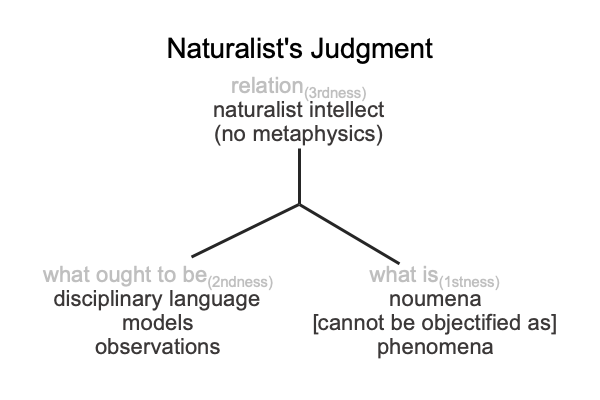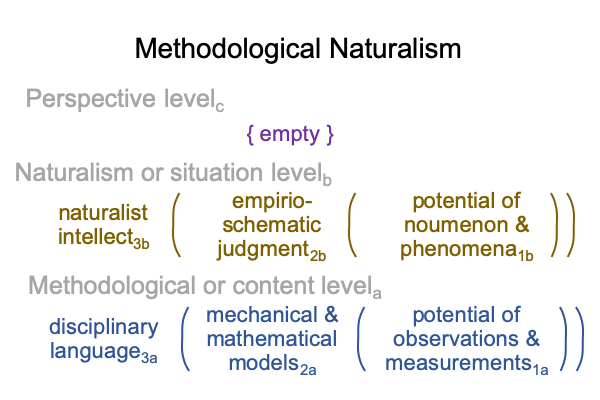0013 Okay. I must hold, in my mind, the upside-down celestial waters.
Within these waters, a leviathan swims, asking the questions, “Can Intelligent Design be taught as a science? How do we demark science and non-science (that is, religion)?”
But, those on the surface, the sailors on the ship, The Creation Science, suspect that the leviathan is really asking, “Can we teach science as a religion?”
Of course, it all depends on how one defines the word, “religion”.
0014 In section 3, Pennock considers the philosophy behind the 2005 Kitzmiller vs Dover decision and establishes five points (H-L).
First (H), Kitzmiller does not follow the criteria used in the McLean case (points A-E).
Second (I), Kitzmiller relies on a ballpark demarcation (a ground rule, so to speak). Creationism violates this ground rule.
Third (J), the ground rule is methodological naturalism. This rule says, “Metaphysics is not allowed.”
The word, “metaphysics”, is rooted in two terms, meta- (to cross over) and -physics (the physical). Naturalism does not allow its followers to pass out of the realm of phenomena. Phenomena consists in that which is observable and measurable.
0015 Pennock dwells on this point (J) at length.
To me, he describes the Naturalist’s judgment.
Allow me to elaborate.
A judgment is a primal triadic relation, consisting in three elements: relation, what is and what ought to be.
0016 The relation is the naturalist intellect, which rules out metaphysics. This relation is imbued with Peirce’s category of thirdness. Thirdness associates with a normal context3, as described in A Primer on the Category-Based Nested Form.
0017 What is consists of phenomena. Phenomena are observable and measurable features of a thing or event.
There is a certain philosophical emptiness to phenomena. After all, phenomena do not constitute the thing itself, even though some may imagine that this is the case. The thing itself cannot be objectified as its phenomena. So, there is a word for the thing itself: “noumenon”.
What does this imply?
What is may be expressed as a continuity between two real elements, a noumenon and its phenomena. That continuity is placed in brackets for notational clarity. What is consists of a noumenon [cannot be objectified as] its phenomena.
This dyad belongs to the category of firstness. Firstness is the monadic realm of possibility. Phenomena have the potential to be observed and measured. A noumenon has the potential of capturing the attention of the naturalist intellect.
0018 What ought to be consists of another judgment, where disciplinary language (relation, thirdness) brings together mechanical and mathematical models (what ought to be, secondness) with observations and measurements (what is, firstness). This triadic relation is called “the empirio-schematic judgment” and first appears in Comments on Jacques Maritain’s Book (1935) Natural Philosophy.
The empirio-schematic judgment, what ought to be, in the Naturalist’s judgment, is imbued with secondness, the character of actuality.
Here is a diagram.

0019 Fourth (K), the ground rule of “no metaphysics” does not appeal to the criterion of falsifiability (E).
At this point, I can see that the criteria espoused by Michael Ruse applies to portions of the Naturalist’s judgment. A and B cohere to the naturalist intellect (relation) and the selection of noumena (what is). Noumena must be things that have observable and measurable facets to their forms. C, D and E pertain to the connection between the empirio-schematic judgment (what ought to be) and phenomena (what is).
In terms of the metaphor of inversion, Michael Ruse’s criteria keep us firmly fixed in the celestial waters, where the leviathan of the “not religious” sciences swims.
0020 In order to appreciate this whale of a topic, swimming in the heights of state-funded liquidity, I unfold the Naturalist’s and the empirio-schematic judgments into category-based nested forms, based on their assigned categories. The result is a two-level interscope
The interscope is introduced in A Primer on Sensible and Social Construction.
Here is the diagram.

0021 Methodologicala naturalismb may be depicted as a two-level interscope. Method goes with the empirio-schematic judgment. Naturalism goes with the Naturalist’s judgment.
The naturalist intellect3b rules out metaphysics. This rule is Pennock’s last point (L). The rule, “no metaphysics”, comes from an occluded perspective level. The rule does not reveal what is in the perspective level. Indeed, the naturalist views the rule as coming from the content level.
Disciplinary language for each science3a follows the rule of the naturalist’s intellect3b. Any disciplinary language3a that discusses metaphysics cannot be labeled as a “science”.
Of course, in this situation, the word, “metaphysics”, is code for Christian theology. But, that is not what “metaphysics” really means, as previously noted.
This exclusion follows the logic of normal contexts. Normal contexts exclude, align or complement.
0022 Creation science talks about metaphysics, while pretending not to.So, in the 1981 McLean vs Arkansas trial, the leviathan in the celestial waters of BG(il)L descends to upset the boat, The Creation Science, and bites off the leg of its captain.
